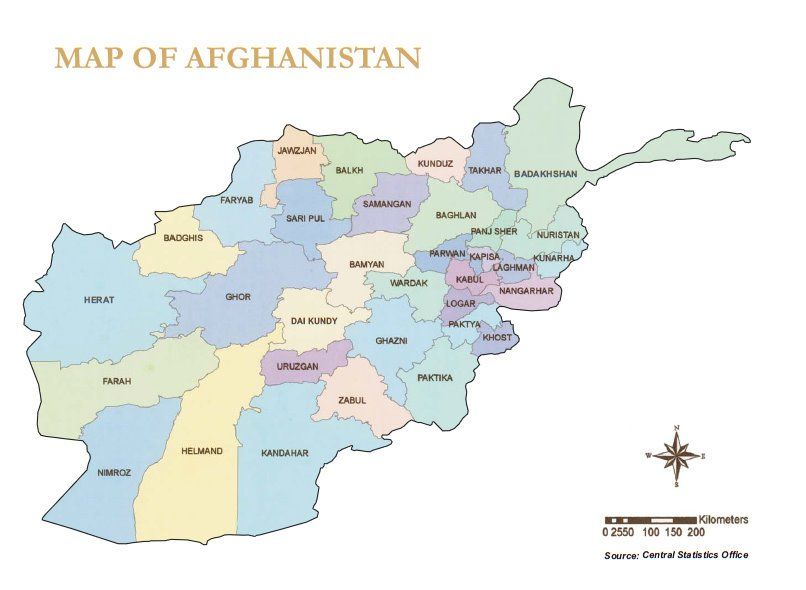Most travellers goings to Afghanistan don’t really need to look at a map. If you’re travelling to Afghanistan, you should be going with a trusted guide or locals you know very well, and they should know exactly where to take you. If at any point you or they need to get out a map to see where you’re going, I’d highly recommend that you shouldn’t be there in the first place. However, just because you don’t need to look at a map, it doesn’t mean you shouldn’t. And getting familiar with the maps before you get there isn’t a bad idea!
Table of Contents
- Where is Afghanistan?
- Afghanistan is in a pretty tough neighbourhood
- Afghanistan’s provinces
- Who controls what?
Where is Afghanistan?
Afghanistan is technically located in southern Asia, but in reality straddles the border between South Asia and Central Asia, thus one of the reasons it has been so hotly contested over the years. Afghanistan is approximately 652,230 sq km in size, is the world’s 40th largest country and is completely landlocked.
Afghanistan is in a pretty tough neighbourhood
Afghanistan is bordered by Tajikistan, Uzbekistan, and Turkmenistan to the north, Iran to the west, Pakistan to the south and east, and there’s a very small border with China in the far east. This also influences its major ethnic groups and languages.
Afghanistan’s provinces

Afghanistan is made up of 34 provinces. Provinces are extremely importantly in Afghanistan as they are often the power bases for individual warlords and are also based roughly on the country’s ethnic and linguistic groups.
Kapisa is the smallest province, while Helmand is the largest province. Kabul province of course has the largest population and population destiny, especially with ever increasing numbers of people heading to Kabul to find work.
Who controls what?
This is probably the most important map you’ll look at before travelling to Afghanistan. Any tour operator in Afghanistan who has half a brain knows to stay away from areas controlled by the Taliban, or even worse, ISIS. Too often tourists and guides seem to ignore this, but rest assured we take the conflict in the country very seriously.
The Pink areas are controlled by the Afghanistan Government, NATO and ISAF (International Security Assistance Forces) while the white areas are controlled by the Taliban. The small grey area to the east of Afghanistan is controlled by ISIS.





